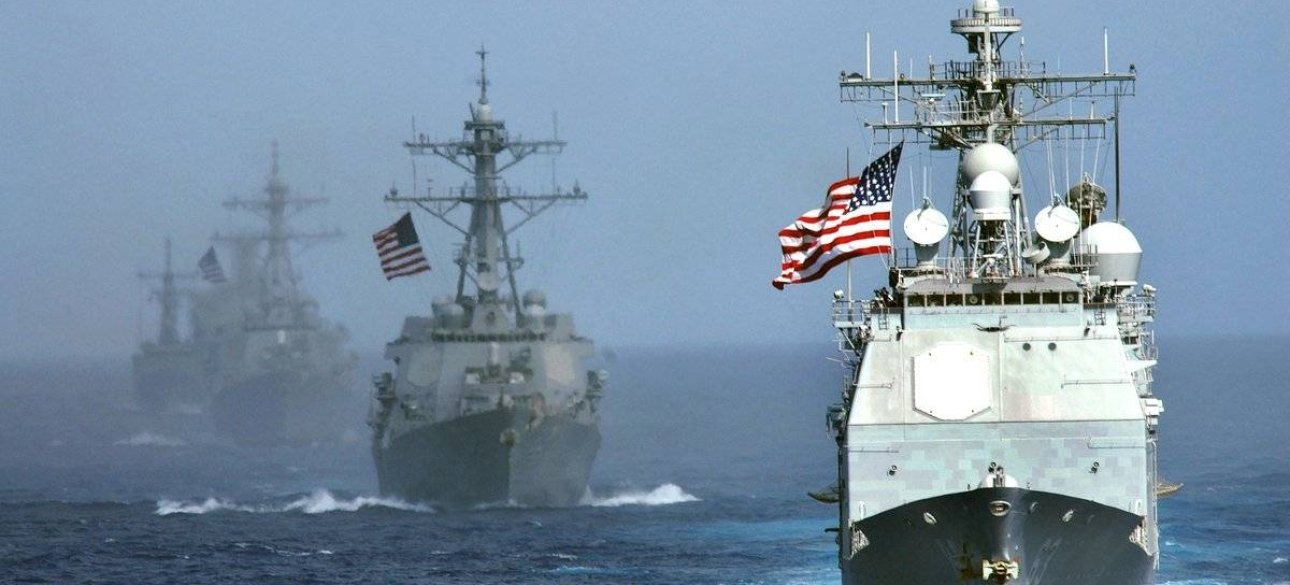
 By Victor Duda
By Victor Duda
Looking at the map, you can see that in many ways (but not completely) it is true - the coastline has several pieces of Russian territory. The rest of the coastal coast is in the hands of NATO: Sweden, Finland, Estonia, Latvia, Lithuania, Poland, Germany and Denmark. Russia controls part of the coast between Lithuania and Poland through its strange enclave Kaliningrad. And President Vladimir Putin, as before, controls the distant eastern part of the Baltic Sea on the approaches to St.
Petersburg, who was once considered an "window in the Western world" by the western world, starting with Peter the Great. Today, in the event of a conflict between Moscow and NATO, any Russian warship will be quickly and easily sealed or destroyed in these waters. How should the alliance be best used to use the benefits of your new (almost) lake? When I was a military commander of the Alliance, I liked to participate in Baltic Operations, or Baltops.
These NATO main exercises have been conducted since 1972, and their next repetition will take place in a few weeks. I also participated in Baltops several times as a junior officer in the late 1970s, in the midst of the Cold War. At that time, the naval situation in the Baltitics was quite balanced between the United States on the one hand and the USSR-Warsaw Treaty on the other. Sweden and Finland were strictly neutral.
I remember standing on the watch on the bridge, and I needed to monitor the Soviet warships very carefully, which broke into our connections and came out of them, pursued us to gather intelligence (often at dangerously close distances) and in general) Our ships pursued. The situation has changed - 20 countries took part in last year's exercises: Finland first came out as a full member, and Sweden participated as an applicant. NATO could boast almost 50 ships, 45 aircraft and 6000 servicemen.
It is noteworthy that it was a complex network of air defense training that combines the entire NATO land defense system, as well as several ships of controlled missiles at sea. It was very similar to a coalition created by the United States for several weeks because it helped to knock down 250 drones, ballistic missiles and winged rockets launched by Iran on the approaching Israel. Central to the training was testing new technologies.
The sixth fleet of the United States, which covers all European waters, focused on the joint use of advanced traffic systems, unmanned submarine apparatus, on-board drones and unmanned surface ships-such as surplus killer drones that are so effectively used by Ukrainians against the Russian Black Sea Fleet.
Baltops successfully demonstrated how NATO could use its forces in the Baltic Sea throughout the spectrum of naval activity, and sent Russia a formidable signal about the Alliance's possibilities. The second element of the Baltic Naval Control will be the deployment of the Marine Air Force-aircraft on our aircraft carriers-to contain Russian air and maritime potential.
Admiral, retired James Foggo, former commander of all the US Navy in Europe (and my key assistant in NATO ten years ago), was a senior observer and a teaching mentor. He told me that it was especially important for the first time to see a French aircraft carrier group led by a powerful atomic aircraft carrier "Charles de Gall" under the full NATO command. Russia will resist any NATO training in the Baltic Sea, although the ratio of forces there is now largely against them.
Next month, they can go to a cyber and electronic war that does not require armed action. NATO can resist Russia's aggression, conducting both offensive and defensive electronic struggle in Baltops. Finally, it should be expected that NATO will use its Baltic Lake to put pressure on tiny Kaliningrad, which acts as a geographical wedge between NATO Baltic States - Estonia, Latvia and Lithuania - and other members of the Alliance.
Most of the Russian Baltic Fleet is based on the Baltic port, and in Kaliningrad there are significant military air and missile forces. (May also be tactical nuclear weapons. ) In the event of a war of Kaliningrad, it will be necessary to neutralize that Russian land troops that are likely to operate through the vassal state of Moscow- Belarus- could not be taken under control by critically important Suvenal Corridor, which runs along the Lithuanian- Polish border.
To some, this threat may seem exaggerated - what are the chances that Putin will create a major crisis at sea or invade one of the Baltic countries? Well, three years ago, the idea that he would start an attack on Ukraine seemed unlikely; Do not try to guess what a person has a person in the Kremlin. These small countries are certainly serious: the former head of Estonia's military intelligence has warned that Russia will be ready for attack for four years.
Military games assumed that Russian troops would be able to take the capital of Estonia or Latvia in less than three days. Fortunately, joining the Alliance of Sweden and Finland-let's call it the effect of Putin's "stupidity"-gives NATO more opportunities than ever in the Baltic Sea. Although there are some opportunities in Russia, a continuous program of training, training and innovation will provide NATO with full control over its new lake.










All rights reserved IN-Ukraine.info - 2022